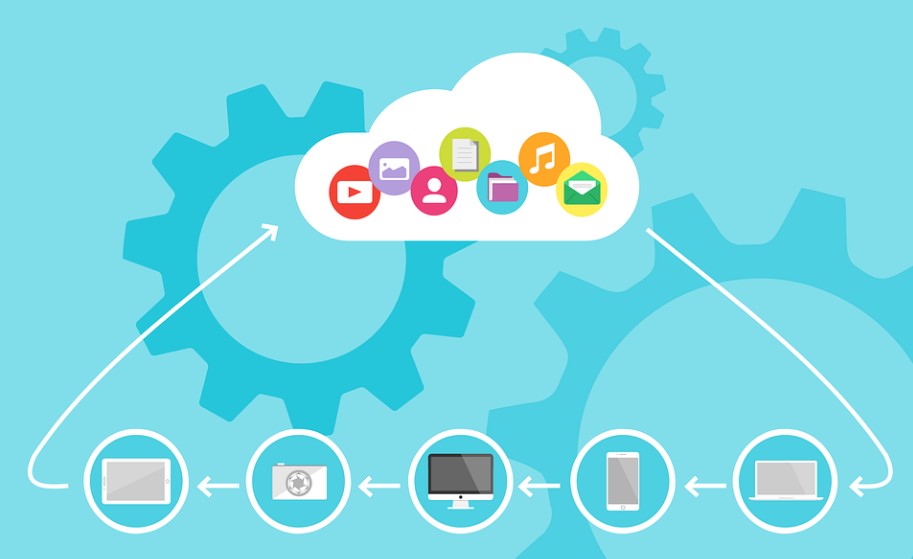Welcome to a topic that’s catching a lot of attention in the tech world: the future of Object-Relational Mapping (ORM) in .NET applications. If you’re wondering what that mouthful means, don’t worry. In simple terms, we’re talking about how software developers can make it easier to manage and interact with databases. And when it comes to making this task more streamlined and effective, one tool is emerging as a game-changer: dotConnect for MySQL.
So, why should you care? Well, databases are the backbone of almost every modern service you use, from social media to online shopping. As we continue to generate more and more data, the tools we use to manage this data need to get better. That’s where dotConnect for MySQL comes in. It’s setting new standards for ease of use, performance, and versatility, making it a key player in the future of how we’ll interact with databases.
The Evolving Landscape of ORM in .NET
When we talk about Object-Relational Mapping, or ORM for short, we’re discussing a way for software to interact with databases. Think of it like a translator that helps two people who speak different languages understand each other. In the tech world, ORM is that translator between your application and a database, helping them exchange information smoothly.
So, what’s happening in the .NET ecosystem when it comes to ORM? Well, .NET has been around for a while, and it has a variety of tools to help with this translation job. Some are older and have been used for years, while others are newer and bring fresh approaches to the table.
In the past, developers often had to write lengthy and complex code to fetch or update data in databases. It was time-consuming and prone to errors. Modern ORM tools in the .NET ecosystem are trying to change that. They aim to make it as easy as possible for developers to work with databases, without needing to be experts in database languages like SQL.
What’s interesting is that as our needs have changed — like wanting to access data faster, or handle more complex types of data — these ORM tools have had to adapt. They’re becoming more powerful, flexible, and easier to use. They’re also integrating better with popular development environments like Visual Studio, giving developers a more streamlined experience.
In summary, the world of ORM in .NET is changing fast, and for the better. Developers have more options and more powerful tools at their fingertips. This opens up new possibilities for what can be built and how quickly it can come to life. And among these evolving tools, dotConnect for MySQL is showing itself to be a standout player, but we’ll get into that in the next sections.
This evolving landscape is not just for techies and developers to think about. It impacts anyone who uses or benefits from digital services, which, let’s face it, is most of us. So, understanding the role of tools in this changing world can give us a glimpse into the future of technology and how it will make our lives easier.
What is dotConnect for MySQL
Let’s get to know dotConnect for MySQL, a tool that’s becoming a key player in the world of ORM for .NET applications. At its core, it’s a MySQL ADO.NET data provider, but it offers so much more. Think of it as the Swiss Army knife in a developer’s toolbox when it comes to database management.
So, what exactly does it offer? Well, dotConnect for MySQL brings a bunch of features that help developers manage databases more efficiently. For starters, it performs really well, meaning it can handle a lot of data quickly. If your app needs to serve thousands of people at the same time, this tool can take it in stride.
One of its standout features is its integration with Visual Studio, a place where many developers spend their time building applications. It adds some easy-to-use, graphical tools right within the development environment, making the developer’s life much more straightforward.
Another cool thing about dotConnect for MySQL is its flexibility. It plays well with various programming frameworks and development environments, not just the ones from Microsoft. That means developers have more freedom to choose how they build their apps.
Now, let’s talk about its role in the ORM landscape. As we discussed earlier, ORM tools act as translators between applications and databases. dotConnect for MySQL isn’t just any translator; it’s like a multilingual diplomat who understands the nuances of both sides. It’s designed to make that translation process as smooth as possible, bringing in new techniques and features that set it apart from other ORM tools.
In a nutshell, dotConnect for MySQL is making waves because it’s fast, user-friendly, and versatile. As the world of ORM in .NET evolves, this tool is right at the forefront, pushing the boundaries of what’s possible in database management. And that’s something worth paying attention to, whether you’re a developer or just someone who benefits from fast and reliable digital services.
High-Performance & Scalability
When it comes to building modern applications, two things are super important: how fast the application can operate (that’s performance) and how well it can adapt to growing demands (that’s scalability). dotConnect for MySQL excels in both these areas, making it a go-to choice for developers.
Firstly, dotConnect for MySQL is fast. Really fast. Imagine you’re in a car race, and you’ve got one of the fastest cars on the track. That’s what using dotConnect for MySQL is like in the world of databases. It’s designed to handle data at lightning speeds, which is crucial when you’re serving a large audience who want instant results. It’s built on MySQL ADO.NET technology, which is known for its high-speed data processing capabilities.
Scalability is another strong point. Let’s say your app starts with a few hundred users but suddenly blows up to have thousands or even millions of users. dotConnect for MySQL can scale up smoothly to meet that demand, ensuring that your application remains reliable even as it grows.
Now, let’s talk about productivity, especially with its advanced Visual Studio integration. Imagine you’re cooking, and you have a kitchen assistant who hands you whatever you need before you even ask for it. That’s what it feels like to have dotConnect for MySQL integrated into Visual Studio. It offers graphical tools that make database tasks almost as easy as drag-and-drop, saving you a ton of time and effort.
Finally, versatility. dotConnect for MySQL is like a world traveler who feels at home in many places. It supports a wide range of programming frameworks like .NET Core and Entity Framework, and it’s compatible with various development environments, including multiple versions of Microsoft Visual Studio and even non-Microsoft platforms like Embarcadero Delphi Prism.
Future-Proofing Your Projects
In a world where technology is constantly changing, one of the biggest challenges is making sure what you build today won’t become obsolete tomorrow. It’s like buying a new smartphone — within a year or two, a new model comes out with features you never knew you needed. The same goes for software development. How do you build an application that not only serves today’s needs but is also ready for what the future has in store? That’s where dotConnect for MySQL comes into play.
Adaptability is the Name of the Game
First off, dotConnect for MySQL is built to adapt. It’s like a chameleon that can change its colors to fit its surroundings. As new technologies and approaches emerge, this tool has the flexibility to integrate with them. That means your project won’t get stuck in the past; it can evolve and stay relevant.
Keeping Up with Changing Needs
What’s also great about dotConnect for MySQL is how it can handle different types of data and database operations. As our needs grow more complex — maybe we start dealing with more real-time data or require more advanced security features, this tool has the capabilities to keep up. It’s like having a car that can easily switch from being a city commuter to an off-road vehicle — it gives you the versatility to meet changing conditions.
Investing in the Long Term
Using dotConnect for MySQL is akin to making a long-term investment. Sure, there may be other tools that can do the job today, but how many of them are built to adapt to whatever the future throws at them? By incorporating dotConnect for MySQL into your .NET projects, you’re essentially future-proofing them, making it easier to implement new technologies and approaches as they become available.
In summary, dotConnect for MySQL isn’t just about solving today’s problems — it’s about preparing for tomorrow’s challenges. It offers the adaptability, versatility, and forward-thinking design that can make your projects resilient against the fast-paced changes in the tech world. So if you’re looking to build something that stands the test of time, this tool is worth considering.




